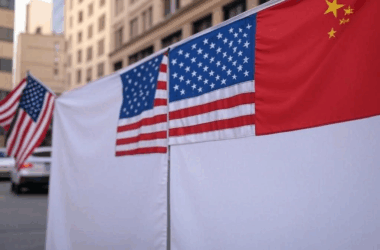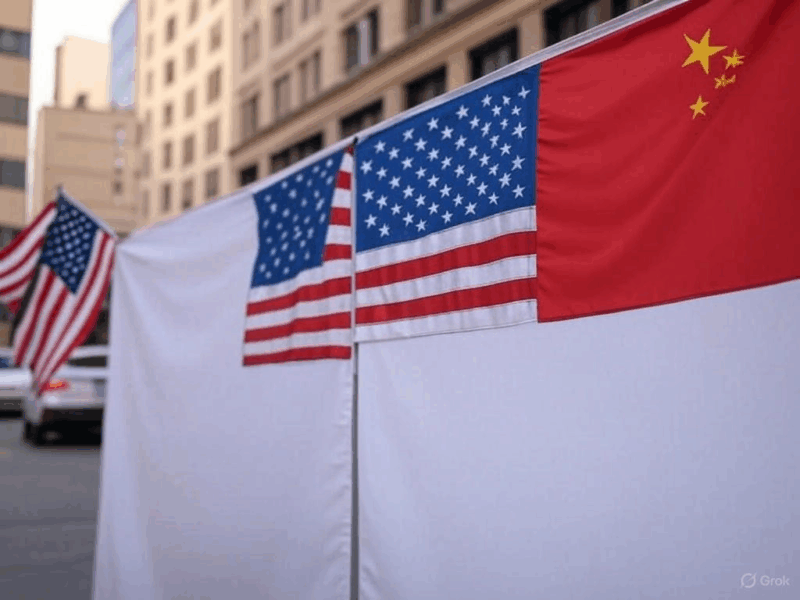If you’ve been keeping up with the buzz around electric vehicles (EVs), you might’ve heard about the jaw-dropping 245% tariff the U.S. slapped on Chinese-made EVs. Yep, you read that right—245%! It’s a bold move that’s got everyone from car enthusiasts to policymakers talking. So, what’s behind this hefty tariff, and why is it happening now? Let’s break it down in a way that makes sense, like we’re chatting over coffee.

The Big Picture: Trade Tensions and Economic Strategy
The U.S. and China have been in a trade tug-of-war for years, and EVs are the latest battleground. The Biden administration, continuing a trend from previous years, is using tariffs as a tool to protect American industries. But this 245% tariff isn’t just about numbers—it’s about leveling the playing field. Chinese EV brands like BYD and NIO have been making waves with affordable, high-quality electric cars. Sounds great for consumers, right? Well, not if you’re an American automaker like Tesla, Ford, or GM trying to compete.
The fear is that Chinese EVs, backed by hefty government subsidies, could flood the U.S. market and undercut domestic manufacturers. Those subsidies allow Chinese companies to sell cars at prices that American brands can’t match without losing money. The tariff is essentially a “not so fast” message to China, designed to make their EVs way pricier in the U.S. and give local companies a fighting chance.
Protecting Jobs and National Security
Another big reason for the tariff? Jobs. The auto industry employs millions of Americans, and EVs are the future of transportation. If Chinese EVs dominate the market, it could mean fewer jobs in places like Detroit or Fremont. The U.S. government wants to keep those jobs at home, especially as the country pushes for a greener economy.
Then there’s the national security angle. EVs aren’t just cars—they’re packed with cutting-edge tech like batteries, AI, and connected systems. The U.S. is wary of relying on Chinese manufacturers for critical components, especially amid concerns about data privacy and potential supply chain vulnerabilities. By hiking tariffs, the U.S. is saying, “We’d rather build our own EV ecosystem, thanks.”
READ MORE BLOG: E-Way Bill | A Key Component of GST Regime
The Global EV Race
Let’s zoom out for a sec. The world is racing to dominate the EV market, and China’s been sprinting ahead. They’ve got the world’s largest EV market, massive battery production, and brands starting to go global. The U.S., meanwhile, is playing catch-up. The Inflation Reduction Act and other policies pour billions into domestic EV production, but it’s a long game. Tariffs buy time for American companies to scale up and innovate without getting steamrolled by cheaper imports.
But here’s the flip side: tariffs can backfire. They might make EVs more expensive for U.S. consumers, slowing the shift to clean energy. Plus, China could retaliate with tariffs of its own, hurting American companies that rely on the Chinese market. It’s a high-stakes chess match, and we’re all watching to see who blinks first.
What’s the Human Impact?
At the end of the day, this tariff isn’t just about geopolitics—it’s about people. It’s about the factory worker in Ohio hoping their plant stays open. It’s about the college grad eyeing a job in renewable energy. It’s about families wanting affordable EVs to cut their carbon footprint. The 245% tariff is a gamble that protecting American industries now will pay off for communities in the long run.
But let’s be real: tariffs alone won’t solve everything. The U.S. needs to double down on innovation, infrastructure, and education to compete in the EV revolution. That means more charging stations, better batteries, and training programs for the next generation of engineers.
READ MORE ON :What is Earth Day?
So, What’s Next?
The 245% tariff on Chinese EVs is a loud statement in the U.S.-China trade saga. It’s about protecting jobs, securing supply chains, and staking a claim in the global EV race. But it’s also a reminder that the road to a sustainable future is full of twists and turns. Will the tariff spark a boom in American EV production, or will it drive up costs and slow progress? Only time will tell.
For now, keep an eye on how this plays out. If you’re an EV fan, you might notice fewer Chinese brands at your local dealership—but maybe more “Made in the USA” stickers. What do you think about the tariff? Drop a comment below and let’s keep the conversation going!












